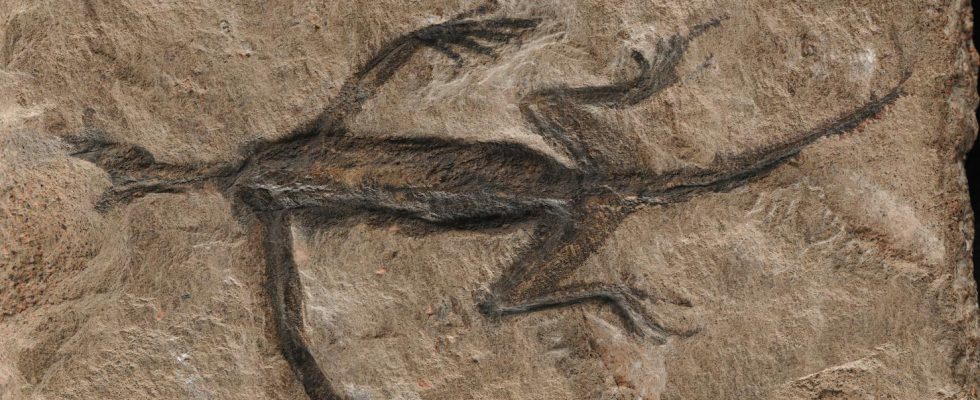unsaveSave
expand-left
fullscreen Tridentinosaurus antiquus was discovered in the Italian Alps in 1931 and was seen as an important specimen for understanding early reptilian evolution. But it seems to be partly a scam. Photo: Valentina Rossi/Handout
Strangely well-preserved remains of an ancient reptile have puzzled scientists. But now the mystery may be solved – it seems to be a fossil hoax.
A 280-million-year-old fossil with the soft parts remaining has been hailed in articles and studies as an important piece of the puzzle for understanding the early evolution of reptiles. At the same time, experts have been puzzled by how the fossilized skin could be so well preserved and there has been uncertainty about which reptile group the strange lizard-like animal belonged to.
However, no one seems to have closely examined the specimen, which was found in the Italian Alps in 1931 and was named tridentinosaurus antiquus – until now.
Old riddle
A group of researchers has, among other things, used UV technology to examine the remains. And their discovery, presented in the journal Palaeontology, provides a definitive answer to a nearly century-old paleontological puzzle.
The outline of the fossil, dark against the surrounding rock, has been interpreted as preserved soft tissue – something that is rare to come across. The specimen was classified as a member of the protorosaurs.
However, microscopic analysis revealed that the texture and composition did not match genuine fossilized soft tissue. Instead, it appears to be some form of black paint that has been painted on an artificial lizard form – likely to enhance the fossil’s appearance, the researchers believe.
– The strangely preserved tridentinosaurus has puzzled scientists for decades. But now everything is falling into place. What has been described as charred skin is just color, says study co-author Evelyn Kustatscher from Naturmuseum Südtirol, in a comment.
The secret revealed
However, the fossil is not a total hoax. The hind legs appear to be genuine, albeit in poor condition. There are also remains of small scales, osteoderms, which may have sat on the back of the animal.
But the original researchers were misled by the hoax, and now modern-day experts are urging caution when using the specimen in future studies.
– The answer to all our questions was right in front of us. We had to study this fossil specimen in detail to reveal its secrets – even those we might not want to know, says lead author Valentina Rossi from University College Cork.
